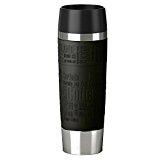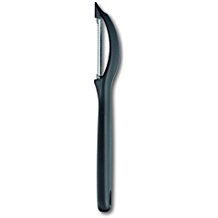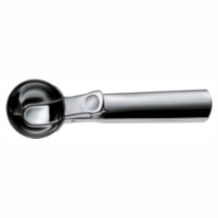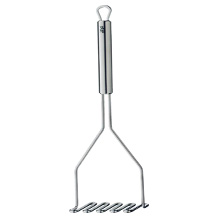Can opener purchasing advice: how to choose the right product
- The most important things in a nutshell
- A can opener belongs in every household, as cans without an integrated tab are otherwise impossible – or difficult – to open.
- Alternative opening methods are less advisable as they pose a risk of injury.
- There are manual and electric can openers. The latter are recommended if you can or want to use as little force as possible when opening cans.
- Buyers should pay particular attention to ergonomics, functionality and safety.
Can opening made easy
Whether it’s fruit, vegetables, ready-meals or pet food: tins are practical for keeping food for a long time. But not every can has a tab to open it. It also often happens that the tab breaks off when you try to open it. In such cases, a can opener, also known as a tin opener, can help. Manufacturers now offer numerous models that differ considerably in terms of their functions, safety aspects and use.
Above all, a can opener should enable easy opening, leave no sharp edges in the metal and ensure maximum safety. There are manual and electric models. Some products also stand out for their multifunctionality. Most users prefer openers with which they do not have to exert a lot of force when opening cans.
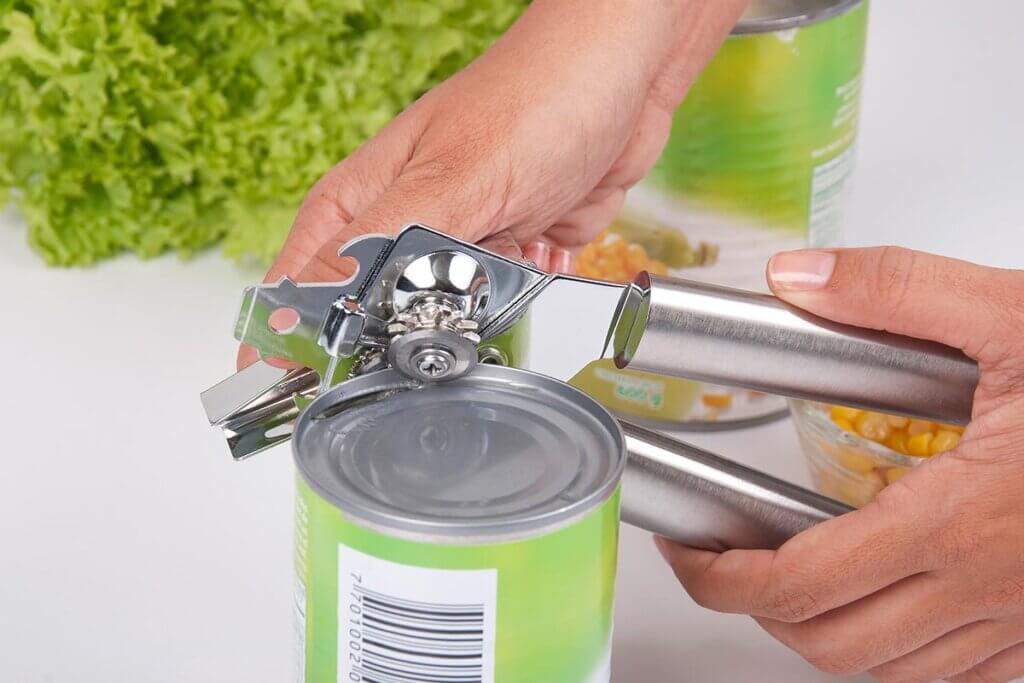
What are the advantages of can openers?
In an emergency, cans can be opened with a knife. However, it is much safer, easier and faster to use a can opener. This not only saves you time, patience and strength, but also reduces the risk of injury. Some can openers also offer useful additional functions. Consumers do not have to dig deep into their pockets to buy one. Even for little money, they can purchase a high-quality product.
The most important advantages at a glance:
- Time saving
- Power saving
- Often multifunctionality
- Safer to use
- Inexpensive to buy
These can opener models are available
Can openers are divided into manual and electric models. If you can or want to use as little force as possible when opening a can, you should look at the electric models. With both versions, it is advisable to pay attention to safety aspects and convenient handling.
How manual can openers work
Manual can openers are considered the classic and most widely used versions. They have a cutting wheel and a transport wheel. To open a can, the cutting wheel is placed against the can rim by hand and turned by means of a rotary crank until the crank has been passed around the outside once and the lid can be opened. With these variants, users have to apply a little force and be careful not to cut themselves on the sharp edge when opening. There are also manual models that are placed on the can from above.
Pro points
- Easy to use
- No batteries needed
- Sustainable
Drawbacks
- Some force required
- Risk of injury
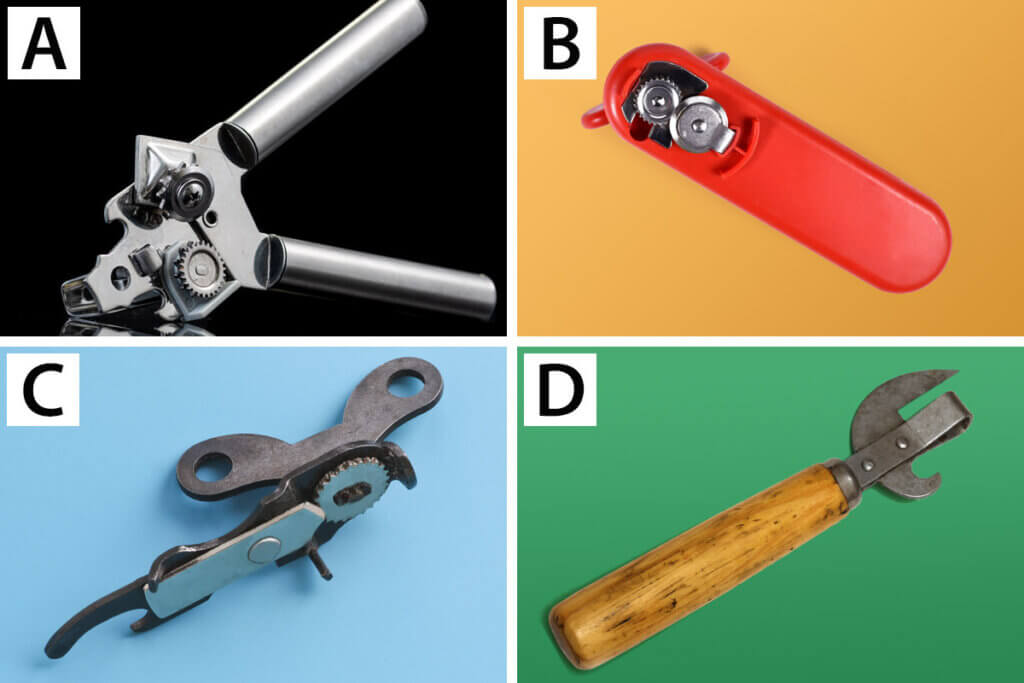
Can opener with tongs
Pincer can openers are similar in appearance and construction to the tool in the name. They have two handles and open the can by means of the “pincers”, which are attached to the side, and a cutting wheel, which must be turned during the opening process. Users take the can to be opened in the pincers, so to speak, and separate the lid by guiding the cutting wheel once around the outside by means of a crank. A guide wheel is responsible for ensuring that the wheel runs along the rim step by step. With this variant, users have to apply some force to the cranking. There is also a risk of injury due to the sharp edges left behind.
Safety can opener
With handle, crank, cutting and guide wheel, most safety can openers, also known as side edge cutters, are similar in design to pliers models. The special feature: safety can openers are placed on top of the can and cut off the lid on the side. This way, there are no sharp edges. Their great advantage is therefore the low risk of injury. This makes these models particularly suitable for households with children or elderly people.
Winged can openers
Wing can openers usually have no handles, but are limited to a wing screw for turning and a cutting wheel. This makes them very compact. With this variant, users place the opener on the can and open it by turning it manually. The cutting wheel engages as soon as they start turning. The can is opened from above. Sharp edges are created here just as with the pliers variant. Thanks to their compact design, wing can openers are easy to stow away and are well suited for travelling, such as camping.
Lever can openers
Lever can openers do not have pliers, but only a handle with a cutting wheel or blade. Visually, they are more reminiscent of a so-called waiter’s knife. Here, users open cans by pushing the cutting wheel or blade into the can from above and moving it around the rim of the can once by means of lever movements. These models do not have a wing screw or a turning wheel. They are similarly compact to wing can openers and are therefore also well suited for travelling. However, due to sharp edges, they pose a risk of injury like the pliers and wing openers. Some lever-action can openers can also be used to open bottles. Some even have an integrated corkscrew. So these products score points with their multifunctionality.
How electric can openers work
Electric can openers are particularly suitable for users who have little or no physical strength to open a can. An electrically operated model can also be useful in households with children. The application is very simple: users place the opener on the can and switch it on by pressing a button. The can opener circles the can independently.
Pro points
- Easy to use
- No force required
- Barrier-free
- Less risk of injury
- Ideal for the catering trade
Drawbacks
- Batteries required
- Somewhat more expensive to purchase
One-touch can openers also score points for their flexibility, as no power source is needed to operate the device. However, users should bear in mind that batteries need to be changed regularly.
Electric can openers with a cable always require a power source to which they are connected with a power supply unit. These models can also be operated intuitively. They score points with their power, but are usually somewhat larger than the one-touch models and therefore less handy.
How to find the right can opener
In order for buyers to be able to choose the product that suits their needs, they should keep a few important purchase criteria in mind. These include handling, material, size, weight, safety and additional features.
Is the material of the can opener rustproof?
The cutting wheel is the most important part of a can opener and should therefore be made of a high-quality material that does not rust. Although most models are made of stainless steel, models in the lower price segment sometimes use cheaper metals that are not always rustproof and therefore wear out more quickly. The other components of a can opener are often made of plastic. Some models have a wooden handle. In any case, users should note that most can openers are not dishwasher safe, even if manufacturers advertise the rust-free nature of the material. Only a few products may be put in the dishwasher; however, these are then also marked with a label for dishwasher suitability.
Convenient handling
Operation is largely dependent on the choice of can opener. If buyers opt for an electrically operated device, the effort required is very low. Handling is correspondingly simple.
If you prefer a manual version, pay attention to safety and additional features. An ergonomically shaped handle can make handling easier. It is important that you do not slip off while opening the can. Also, read the manufacturer’s operating instructions before the first use to avoid application errors.
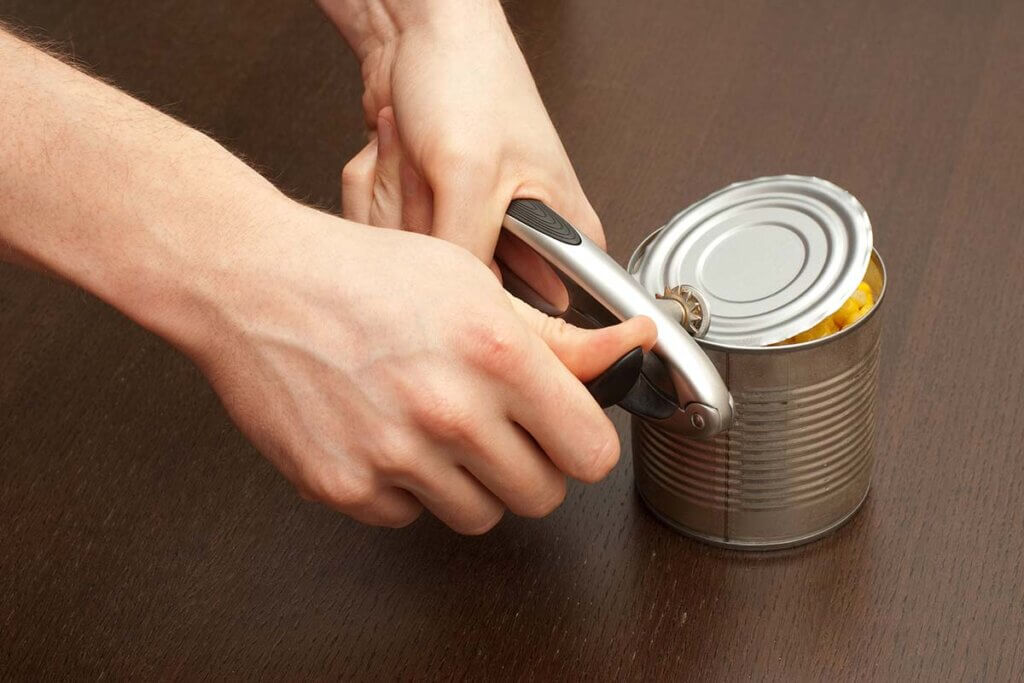
Are can openers suitable for right- and left-handers?
Normally, can openers work for both right- and left-handed people. An ergonomically shaped handle should be just as comfortable in the hand for left-handers as it is for right-handed use. However, there are models that are less suitable for left-handed use. These are usually marked. In general, electric versions are easier to use for left-handers than manual ones.
Size and weight
Usually, can opener size specifications range from 12 to 28 centimetres. Note that larger products take up more space in the cupboard or drawer. All products are suitable to take with you. Weight depends on the size and type of can opener. Compact wing or lever openers are usually lighter than bulging pincer or safety can openers. Common weight specifications are, for example: 150, 240, 320 or 560 grams.
Maximum safety at the cutting edge
With some manual can openers, there is a risk of leaving a sharp edge. So be careful not to choose the cheapest model. High-quality versions leave less edge residue because they cut more cleanly. If you place a lot of value on safety, it is best to opt for an electrically operated or a manual safety can opener or side edge cutter.
Additional features
There are can openers that combine several functions. This can be useful if users need the product on the go or have little space available in the drawer. Some can opener models can even open bottles or sharpen knives. They resemble a multi-function pocket knife. Other can openers offer the option of conveniently removing the detached lid from the can. This can be a built-in magnet or some kind of flat lever.
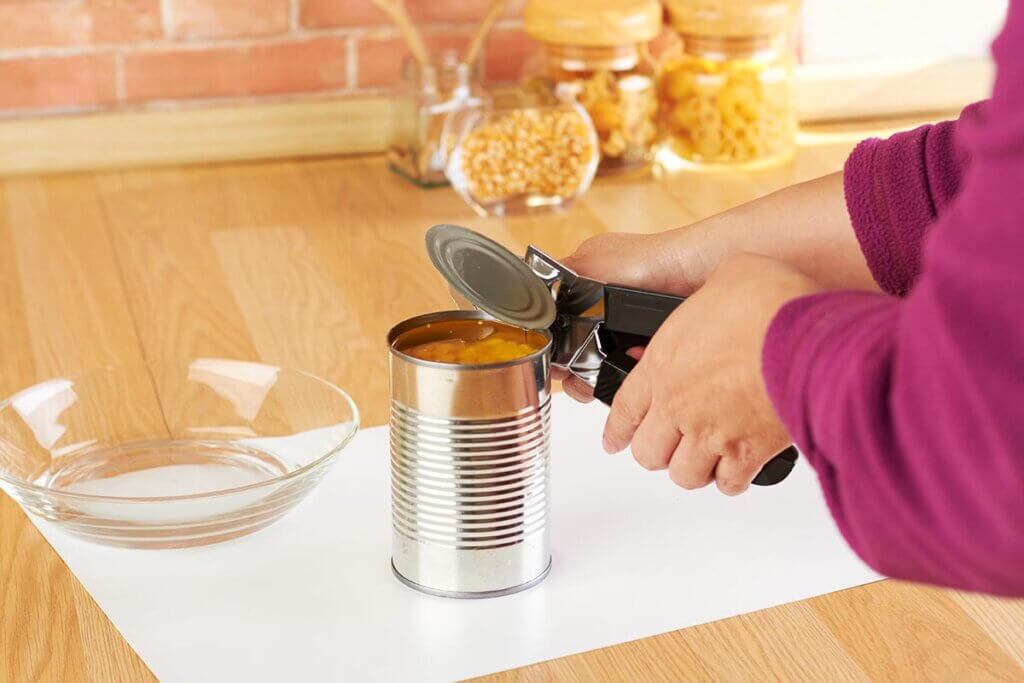
How much do can openers cost?
Buyers do not have to budget a lot for manual can openers, which are available from around 5 euros. High-quality manual models for private use can be found in the price range between 15 and 30 euros. For the electric versions, you pay about 15 to 60 euros. If you want to buy a can opener for industrial purposes, you will usually spend between 60 and more than 300 euros. Above all, handling and various functions entail a higher price in this area. However, it is worthwhile not to buy the cheapest models, but rather to spend a few euros more to get better quality.
Cleaning tips and alternatives
The better users take care of their can opener, the longer they will benefit from the product. There are only a few points to consider. Care is therefore extremely uncomplicated. In terms of can opener alternatives, you will also find helpful tips below, which you should, however, use with caution.
How do I clean and care for a can opener?
Although the can contents usually do not come into contact with the opener during use, users should still make sure to keep the product clean. This not only makes sense for hygienic reasons, but also prevents rust from forming and the blade and cutting wheel from becoming blunt. Cleaning is best done with a cloth, lukewarm water and some washing-up liquid. Dry the can opener well before putting it back in the drawer. Cleaning in the dishwasher is not advisable in most cases.
Vinegar helps with rust
If rust does form, cover the affected area overnight with a cloth dipped in white vinegar. After the exposure time, simply rinse with water and dry.
Can opener alternatives: Rather dangerous
In the following, you will read about three ways to open a can without a suitable product. All of them work in theory, but in practice they are very difficult. Users have to use a lot of force to get at the can contents. Especially with liquid contents, all three variants are less recommendable.
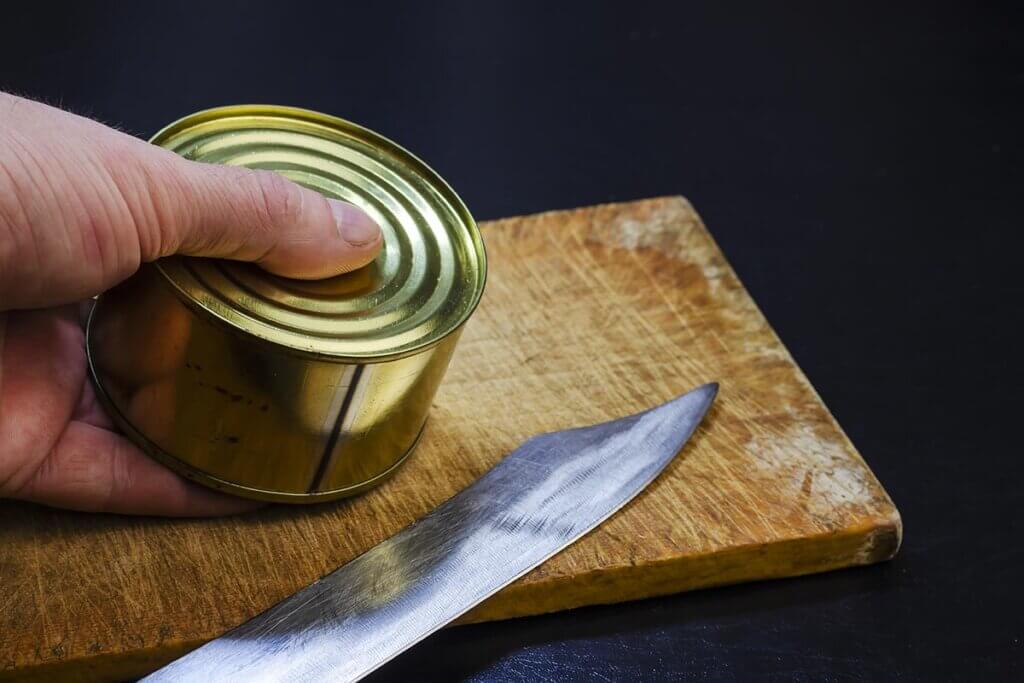
Cutting knife variant
It is actually possible to open a can with a heavy cutting knife. However, this alternative is only recommended in emergencies, as abrasion can cause metal particle residue to end up in the food. To open the can, users poke holes vertically from above with the tip of the knife around the edge of the lid – until the lid can be removed. The handle of the knife should lie firmly in the hand to minimise the risk of injury, and the can should be placed on a firm surface.
Pocket knife variant
The second option is to use a pocket knife, which usually has a serrated blade that you can use to cut off or lever out the can lid. But this variant is also not so easy to implement in practice. Ideally, there are always other people who can help out with a real can opener when travelling.
Tablespoon variant
It is also possible to open a can with a metal spoon. However, this variant takes a lot of time and strength. The spoon is placed at the top next to the seam with the bulge facing outwards. Users must then rub the spoon quickly and often on the spot until the metal softens and finally gives way. However, the spoon must then be used to lever out the lid, which is quite difficult to do.

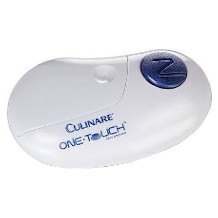
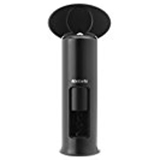
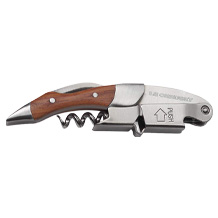
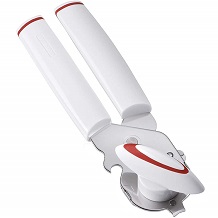

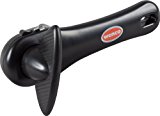
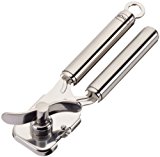
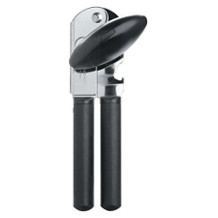

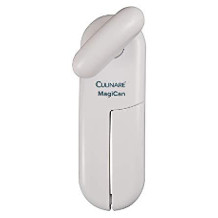
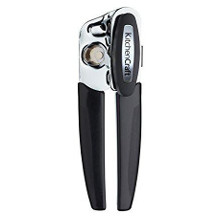
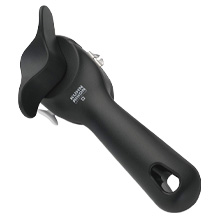
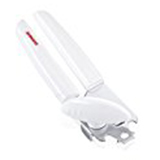
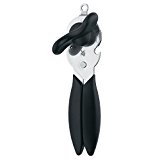
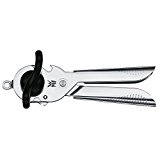
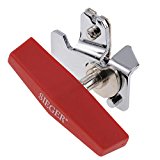
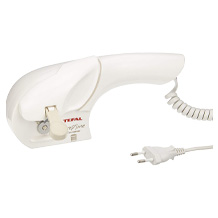
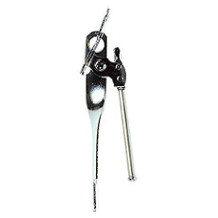
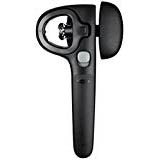
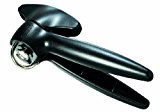
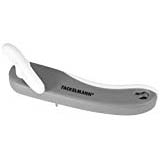

 1,493 reviews
1,493 reviews


